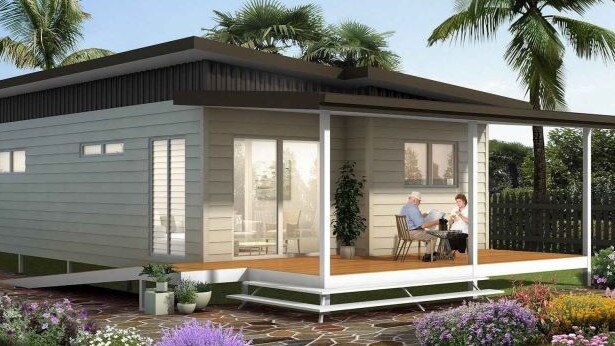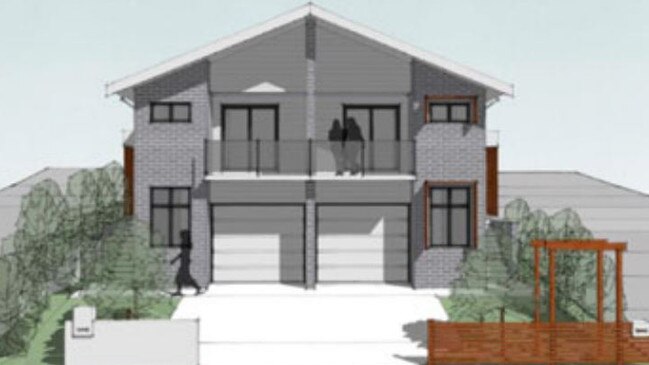Whitsunday housing crisis: How council plans to tackle problem
The Aussie dream – owning a large block of land – might become smaller amid measures proposed to help ease the housing crisis crippling a regional Queensland tourist hotspot. See inside the plans.

Whitsunday
Don't miss out on the headlines from Whitsunday. Followed categories will be added to My News.
A regional Queensland tourist hotspot facing a housing shortage crisis has proposed sweeping changes to ease the problem.
Whitsunday Regional Council has formally adopted a consultation plan to determine what measures it will take to shore up housing for the population now and into the future.
The motion, carried 6-0, comes just days after a scathing Auditor-General report into the state’s social housing register.
Among the measures to be put forward for discussion are potential changes to the planning scheme to encourage more development in a sustainable way, such as granny flat floor sizes and dual occupancy on measured lots.
The council has not adopted any of the potential changes, but rather will seek public feedback on the measures as well as outlining the extent of the housing shortage in the Whitsundays.
“Within the Whitsunday region, a rate of 59 per 10,000 persons are homeless,” council documents’ Housing Affordability Literature Review report states.
“This is well above the statewide rate of 45.6 persons per 10,000.”
That compares to Mackay’s homelessness rate of 36.5 per 10,000 people, and the Isaac region’s rate of 16.1 per 10,000.
At the meeting, Councillor Jan Clifford said businesses in the region were struggling because they could not find accommodation for staff.
“The housing crisis is endemic across the entire nation,” she said.
“It is a crisis and it is getting worse and worse.”
Acting Mayor Mike Brunker said the council’s move showed it was being “proactive” in tackling the issue.
The Housing Affordability Community Engagement Plan, which comes into effect in August for public consultation, states the council anticipates the public’s views and submissions on housing diversity in the region would be a “long process that may end up making changes to the planning scheme”.
Seven potential changes were identified early including revised minimum lot sizes and increased floor areas for secondary dwellings such as granny flats.
The document also outlined potential changes to reduce assessment levels for residential housing products, the introduction of density benchmarks for multiple dwellings to allow for more on a block, or diversity benchmarks for new subdivisions including that a “percentage of development must have larger dual occupancy/multiple dwellings lots”, and encouraging mixed use accommodation in the council’s planning scheme.
It also floated introducing a medium density residential zone.
“Council wants to know if there is anything the community is disliking about the planning scheme in relation to housing and the development of housing,” the document states.

“This is the first consultation about this subject, if community interest is limited, the subject may not progress.”
Among the possible planning scheme amendments was reducing the minimum lot sizes within urban residential zones and “introduce a maximum lot size to enable an increase in density and diversity”.
An example was reducing the 600sq m minimum to 500sq m, that would increase a 20-lot subdivision to 25.
Assessment levels in certain zones could change from impact to code assessable in low density residential zones.
The council has also identified the possibility of introducing density benchmarks for multiple dwellings where currently multiple dwelling or dual occupancy required an 800sq m minimum lot size in all zones, such as reducing it to 600sq m.
Increasing the floor area for secondary dwellings such as granny flats could make them more appealing for homeowners, with an example of increasing the current 70sq m maximum to 100sq m of gross floor area, and increasing the total use area to 140sq m.

Introducing lot diversity benchmarks that would require some lots to be higher density was also among the suggestions, along with creating a medium density residential zone that would “facilitate higher density”.
That would include increased density, building heights in low to medium (two to four storeys), increased site cover and greater diversity in accommodation types.
Mixed use accommodation changes could also include benchmarks to encourage more housing over commercial developments, and include a full review of the existing mixed use zone code.
The council will seek community feedback through email, Facebook and other social media platforms.
It may also hold a community forum on the issue if there is demand for it.




